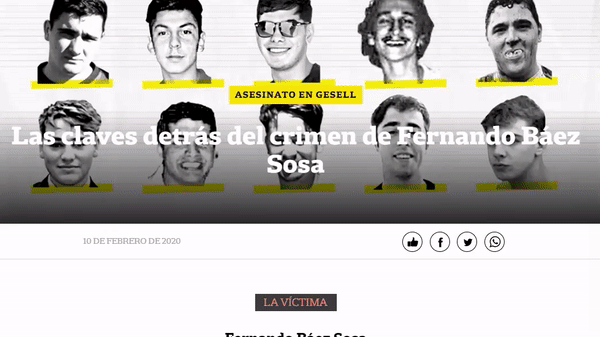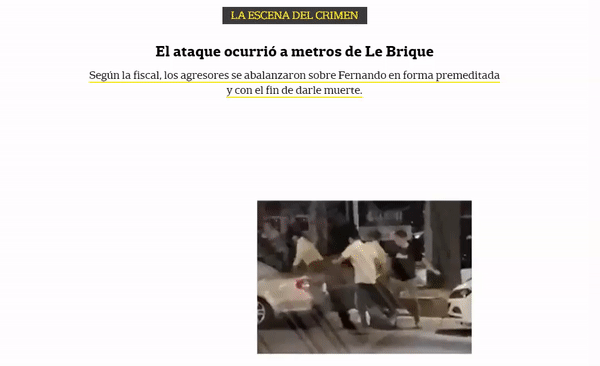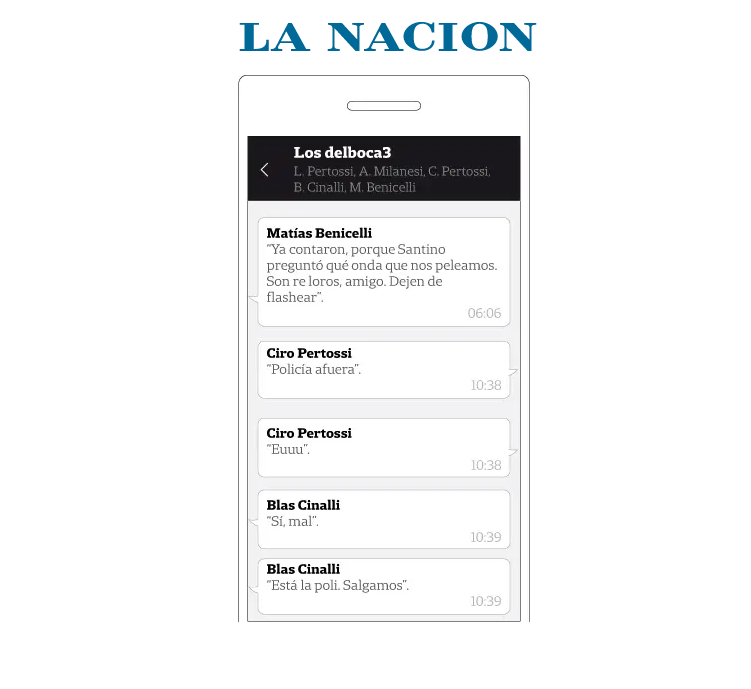1) CONTEXT
On January 18, 2020, in the middle of Summer in Argentina, a teenager of 19 years old who was on vacation in Villa Gesell, was brutally beaten on his way out of a night club by a group of young persons among 18 and 21 years old. According to the testimony of witnesses, there was a minor discussion between Fernando Báez Sosa, the victim, and one of the members of the group who killed him by kicking him in his head. The accused, most of them rugby players in the city of Zárate in the Province of Buenos Aires, escaped and were captured the next morning. At first, 10 of them were arrested, then 2 of them were released. The 8 persons who are still in prison keep a pact of silence and did not declare how the events took place. The impact of this case was unprecedented, there were protests all over the country and the case was published on the front pages of newspapers around the world.
2) DESCRIPTION
As a result of the murder of Fernando Báez Sosa, LA NACION looked for a different way of relating any news about this case that shocked public opinion. A light narrative was devised to give information, which was updated as new events occurred, with unpublished material on the case, evidence from the case file and fundamental data for interpreting the facts. One of the greatest advantages of the project was to achieve a format that concentrated all the information, which at that time was continuous and very scattered.

We proposed to express the project in an innovative way with visual pieces, some original pieces extracted from the case and most of them made by ourselves with infographics and interactives pieces within the general narrative. We work was made in layers, initially, the idea was to reconstruct a chronology of the event and we put together a “who’s who” diagram with the data received of the rugby players (ages, occupation, etc.).

The second day we managed to complete details of the crime scene through videos and information provided by witnesses. After 36 hours we had a complete reconstruction of the events and the roles that the accused could have had in the terrible crime.
3) STRATEGY AND IMPACT
The strategy was to look for the quality and innovation as fundamental keys to inform audience. We worked together with the Police/Crime section of the newspaper and journalists were sent to Villa Gesell to guarantee first-hand, trustful and in-real time information. The challenge was to present said information in a clear, didactic and attractive way to follow events.

We wanted to recreate every detail being known. Thus, for example, when the prosecutor provided the WhatsApp conversation that the group of accused had after the crime, we created a piece that consisted of a simulated chat in which the real messages they exchanged that night were followed by phrases that were key to establish the responsibility of each of them and show the cruelty with which they acted after the crime.

We thought that the community had an imperative need for the truth to come out and we wanted to accompany that demand by reflecting the relevant data of each advance in the investigation. Metrics showed that the requirements and interests of the audiences were reached: the story was the most read on the website every day with more than 5 minutes of average reading.
4) Technology used.
Frontend was developed in Javascript using vue.js as main framework. As regards content, it was used an in-house development that uses Googledoc as platform for uploading interactive elements (text, photographs, videos, etc.) and Archie ML (an open source development of New York Times) as Markup Language.
5) Estimated number of persons working on the project
The team included 10 persons (journalists, designers and programmers).